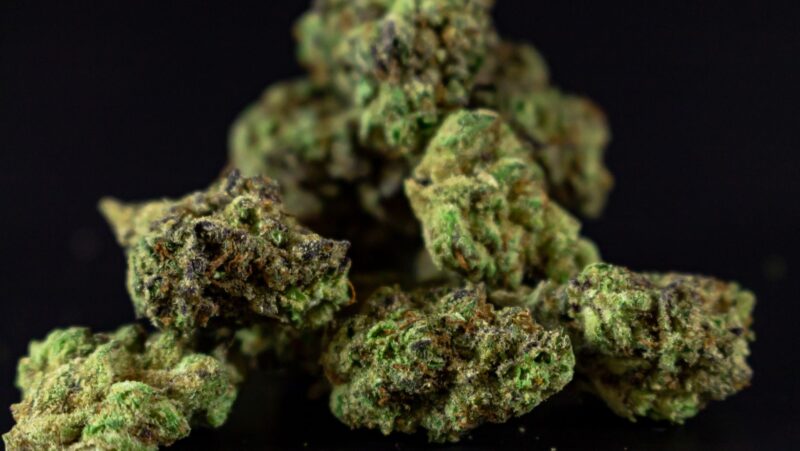
Cannabis sativa, or marijuana/hemp, has been used for medicine for a long time. There’s an ongoing debate about its medical benefits, and some controversial truths exist. If you want to order weed online, it’s important to be aware of varying opinions and perspectives.
Key Takeaways
- Marijuana has a long history of being used for medicinal purposes.
- Research is tough due to regulations, but early studies show potential benefits.
- THC and CBD relieve pain and inflammation. THC is psychoactive; CBD is not.
Ancient Roots of Cannabis in Traditional Medicine
Cannabis has a long history in traditional medicine across the world. In ancient China, around 2737 BCE, Emperor Shen Nung discovered its medicinal benefits. They used it in Chinese medicine to treat conditions like rheumatism and malaria.
Ancient India saw cannabis in Ayurvedic medicine for issues like insomnia and anxiety, mentioned in the Atharvaveda. Ancient Egypt used cannabis for medicinal and religious purposes, as noted in the Ebers Papyrus around 1550 BCE.
In ancient Greece and Rome, physician Dioscorides highlighted its use in the 1st century CE for ailments such as earaches. The ancient Middle East also recognized marijuana’s medicinal value. This is mentioned in the Zend-Avesta by the Persian prophet Zoroaster. Indigenous cultures globally, like Native American tribes, used cannabis for pain relief and other ailments.
This widespread historical use of cannabis in traditional medicine showcases its enduring value for diverse health concerns.
The Science of Cannabinoid
Medical care refines traditional plants into medications that meet strict safety and effectiveness regulations. Marijuana-based medications must pass clinical testing before reaching pharmacies.
Biology research shows that marijuana-based medications might relieve many ailments. Studies examine marijuana’s effects on different cells and organ systems. Some believe cannabinoids could lead to new, highly targeted medications.
Biological research also helps us understand how symptoms start in individual cells. These processes often cause pain or nausea. By interrupting these processes, we could create multiple medications that target specific symptoms and enhance each other’s effects. Marijuana may treat some ailments differently than standard treatments, suggesting it could be used alongside other medications.
Chemical Composition of Cannabis Sativa
Cannabis contains 545 compounds, including 104 cannabinoids and 22 other substances. “Cannabinoids” are compounds from C. sativa L. and their derivatives and transformed products. “Phytocannabinoids” specifically refer to those that come directly from the plant.
Compounds in Cannabis Sativa
| Cannabinoids | Non cannabinoid Constituents |
| Cannabigerol (CBG) type | Flavonoids |
| Cannabichromene (CBC) type | Steroids |
| Cannabidiol (CBD) type | Phenanthrene |
| Cannabielsoin (CBE) type | Fatty acids |
| Cannabicyclol (CBL) type | Spiroindans |
| Cannabinol (CBN) type | Nitrogenous compounds |
| Cannabitriol (CBT) type | Xanthones |
| Miscellaneous-type cannabinoids | Biphenyls |
Cannabinoids’ Interaction with ECS
In a review published in The American Journal of Psychiatry, it was highlighted that cannabinoids, such as those present in cannabis, interact with the body’s endocannabinoid system, which plays a vital role in various psychophysiological functions.

The endocannabinoid system includes cannabinoid receptors (CB1 and CB2), natural cannabinoids (anandamide and 2-arachidonoylglycerol), and enzymes that make and break them down. THC, the main psychoactive compound in cannabis, strongly attaches to CB1 receptors, causing effects linked to addiction. In contrast, CBD doesn’t attach as strongly to these receptors and acts on various systems without the risk of addiction.
While the precise impact of repeated cannabis or cannabinoid use on the endocannabinoid system remains unclear, studies have indicated that regular cannabis consumption can result in neuroadaptations, such as CB1 receptor down-regulation and reduced levels of the enzyme FAAH, which breaks down anandamide.
Medical Benefits of Cannabis Sativa
Pain Relief
Cannabis helps manage neuropathic pain and long-lasting chronic pain. Sativa-dominant strains have anti-inflammatory properties, reducing inflammation and easing pain. They’re also effective for treating migraines and providing an uplifting feeling.
Anti-Inflammatory Effects
Cannabis compounds possess anti-inflammatory properties. Previous research has shown that cannabis extracts can inhibit inflammatory responses in vitro and in pre-clinical and clinical trials, indicating its effectiveness against inflammation.
Nausea and Vomiting Relief
Cannabinoids effectively reduce chemotherapy-induced nausea and vomiting in both adult and pediatric cancer patients. Synthetic cannabinoids have been found to significantly decrease these symptoms compared to a placebo, with no serious side effects reported in children.
Appetite Stimulation
Cannabis boosts appetite, especially helpful for conditions causing weight loss like HIV/AIDS and cancer. This can improve nutrition for those dealing with these health issues. Cannabis sativa triggers strong food cravings and enhances the pleasure of eating. It works by interacting with brain receptors, like the body’s natural endocannabinoids that control appetite.
Energy-booster
Sativa strains energize, improving work attitude and promoting community engagement. They are particularly beneficial for individuals who struggle with lethargy and find it difficult to carry out daily tasks. Sativa-dominant strains can uplift and motivate, enhancing productivity, social interaction, and overall activity levels.
Exploring Sativa Strains in the Market
| Attribute | Pink Runtz | Apple Fritter Strain | Strawberry Cough |
| Aroma/Flavor | Sweet, candy-like | Sour apples, lemon | Bright citrus, spicy, earthy |
| Effects | Calming, relaxing, uplifting | Relaxation and euphoria | Creativity, focus, happiness, intimacy, social interaction |
| THC Content | 25% | 24% | 23% |
| Common Uses |
|
|
|
Purchase Sativa Weed Online
As discussions reveal the controversial truths of cannabis sativa, the online marketplace becomes a way for those who want to access these weeds.

It’s now easier to buy Sativa weeds online at GetLoud Cannabis. With access to high-quality Sativa strains, GetLoud Cannabis offers a seamless and discreet shopping experience.
Frequently Asked Questions
How Can You Ensure The Weed You Buy Online Is Good Quality?
- Research and read reviews from previous customers to assess the credibility and quality of products.
- Opt for an online dispensary that offers a wide selection of strains, edibles, concentrates, and other cannabis products to cater to your preferences.
- Ensure the dispensary provides secure and discreet packaging.
- Look for dispensaries with detailed product descriptions, including strain information, THC/CBD content, and potential effects.
- Choose a dispensary with excellent customer service and support, such as those with live chat or contact numbers.
Are There Any Potential Interactions Between Sativa Cannabis And Prescription Medications?
Combining sativa cannabis with prescription medications can cause interactions. Sativa cannabis affects how medications are processed in the body and can raise heart rate and blood pressure. When mixed with sedatives or blood thinners, it can enhance their effects. It’s important to talk to your doctor before using sativa cannabis with prescription drugs to stay safe.
How Can I Tell If A Cannabis Strain Is Sativa-Dominant?
- Look at its appearance. Sativa plants are tall and slender with light-colored, narrow leaves.
- Consider its effects. Sativa strains give uplifting, energizing effects, ideal for creativity.
- Smell and taste. Sativa strains often have fruity or spicy aromas and flavors.
- Check the THC:CBD ratio. Sativa-dominant strains have higher THC levels.
- Note flowering time. Sativa plants take longer to mature than indica plants.










